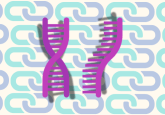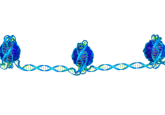Turtle-y amazing

The mystery of how temperature can alter a turtle’s sex may finally be solved.

In turtles and other reptiles, the observation that the temperature of a nest alters whether an egg hatches male or female was first discovered more than 50 years ago. The exact detail behind this has been a mystery, until now. In a study recently published in Science, researchers from Duke University (NC, USA) and Zhejiang Wanli University (Ningbo, China) have provided an explanation for the phenomenon.
The key discovery made by the researchers was that the answer is not in the genetic sequence but in a molecule that affects how genes are expressed. Unlike mammals, the sex of reptiles is not determined by the inheritance of chromosomes but by temperatures during a sensitive stage of development.
A common species of turtle, named the red-eared slider, hatches females from eggs when the incubation temperature is 88°F (32°C) and hatches males when the incubation temperature is 79°F (26°C).
“Temperature-dependent sex determination has been a puzzle for a really long time,” explained Blanche Capel, the team’s study leader. “This is the first functional evidence of a molecular link that connects temperature with sexual development.”
The study showed that the cooler egg incubation temperature increased the levels of a gene called Kdm6b in the turtle’s immature sex organs. This then activated other genes to develop the testes.
The researchers incubated freshly laid turtle eggs at either 88°F or 79°F and looked for differences in the way genes were switched on during the early stages of development of the turtles’ sex organs.
They found that Kdm6b was much more active at the cooler incubation temperature, which produces males, than at the warmer incubation temperature, which produces females. The team then utilized a novel technique to silence the Kdm6b gene in the eggs at the cooler incubation temperature and where a male would usually be produced, a female was instead.
They further showed that the protein encoded by the Kdm6b gene activates the Dmrt1 gene, which turns on the development of male sex organs. They discovered that this works by the modification of histones, loosening the histone tails and enabling the DNA to be more easily accessed and read.
The researchers believe that Kdm6b and its encoded protein can’t sense temperature changes itself since increased activity was not seen in other developing organs, such as the heart or liver.
Their next step is to find out how the temperature change is sensed and what triggers the following cascade of events, as concluded by co-author, Ceri Weber:
“We’re trying to narrow down the possibilities.”





